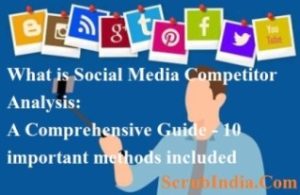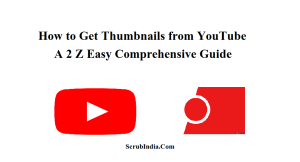
The power of affordable internet advertising to drive business success in 2024
The power of affordable internet advertising to drive business success in 2024 affordable internet advertising: Staying ahead in the ever-changing business landscape often requires adopting new business strategies. With the rise of digital channels, affordable online advertising has become a game-changer for businesses looking for cost-effective yet effective ways to reach their target audience In this context no we will explore the importance of affordable online advertising and how businesses can leverage its potential for success The digital transformation of advertising Traditional forms of advertising, such as television, radio and print media, can be costly and may not provide the level of target audience required by modern businesses Enter online advertising at a price not in a dense, dynamic environment where businesses of all sizes can compete on a level playing field. Digital advertising programs allow companies to showcase their products or services to a global audience without breaking the bank. A low-cost platform One of the main advantages of affordable internet advertising is the availability of cost-effective options. Social media platforms like Facebook, Instagram and Twitter give businesses the opportunity to do targeted advertising at a fraction of the cost of traditional advertising. Additionally, search engine advertising, display advertising, and email marketing offer businesses a variety of options to fit their budget. Advertising targeted for maximum impact Affordable online advertising goes beyond just a budget; It enables businesses to precisely target their audience based on demographics, interests and online behavior. This level of targeting ensures that ads are delivered to the individuals most likely to be interested in the products or services being promoted. This not only makes advertising more effective, but also reduces waste on irrelevant audiences. Promote return on investment (ROI) One of the hardest things for companies to explore affordable online advertising is that they can get a great return on investment. Unlike traditional advertising, digital campaigns offer advanced analytics that allow companies to monitor the performance of their ads in real time. This data can be used to optimize campaigns, ensuring resources are allocated to the channels that produce the best results. Google Ads: A versatile tool for businesses Formerly known as Google AdWords, Google Ads stands out as a versatile and powerful tool for affordable internet advertising . It operates on a pay-per-click (PPC) model, where companies only pay when users click on their ads. Google Ads allows companies to bid on keywords related to their products or services, ensuring that their ads show up when users search for relevant information. This targeted approach increases visibility and the chances of attracting potential customers. Social media advertising: Engaging the connected consumer The impact of social media in modern life makes platforms like Facebook, Instagram and Twitter essential for affordable online advertising. This platform allows companies to create visually appealing ads, connect with their audience through text and messaging, and build a community around their brand The cost-effective cost of social media advertising makes it a better choice for companies looking to connect with digitally savvy and socially engaged customers. Content Marketing: Creating Trust and Authority Content marketing is a cost-effective form of advertising that requires valuable content to be created and shared to attract and engage a targeted audience. Companies can use blogs, articles, videos and infographics to showcase their expertise and build trust with potential customers. This approach not only helps in raising awareness of the brand but also allows the business to establish authority in its operations. With the right content strategy, businesses can get key content without paying a hefty advertising budget. Email Marketing: Direct communication with the audience Email marketing is a powerful tool for affordable internet advertising. Through optimized email campaigns, businesses can engage directly with their audience, offering personalized messaging, promotions and updates. Email marketing platforms provide analytics to track open rates, click-through rates, and other metrics, enabling businesses to adjust their strategies for optimal results The importance of consistent branding affordable internet advertising gives businesses the opportunity to further strengthen their brand across a variety of digital channels. From the use of images in display ads to the voice of voice in social media posts, maintaining a consistent brand image builds audience recognition and trust Brand consistent use contributes to long-term success and helps businesses stand out in a crowded online marketplace. Overcoming challenges of affordable internet advertising and maximizing results While affordable internet advertising offers some benefits, businesses need to be mindful of the potential challenges. Optimizing evolving algorithms, staying on top of platform systems, and constantly improving advertising strategies are essential to succeed in a dynamic digital landscape Businesses spend time with their target audience so understanding, analyzing data and understanding industry trends maximizes their expensive online advertising efforts in a better position to get results Conclusion: affordable internet advertising has revolutionized the way companies promote their products and services. From small start-ups to established businesses, the digital landscape provides a level playing field where creativity and strategic thinking can shine through beyond big budgets. By leveraging the power of cost-effective platforms, targeted advertising and data-driven optimization, businesses can take themselves to new heights in the digital age as we continue to discover that technology and consumer behavior are improving and the adopters of affordable internet advertising are thriving in every moment – expanding the digital market. Also Read : How to disable comments in WordPress, Inserting Calling button, WhatsApp button, Automatic Chat, Sign Up Form Also Read : Google Local Ad Services : Elevate Your Business in Local Search in 2024 Friends, you have just read the post “ The power of affordable internet advertising to drive business success in 2024“ we hope you will like this post. If yes then share it with your friends and keep visiting our website for reading more such posts. If you interested to read about Astrology & Hindu Religion : Click here …………………………… Technological Tips Also Read : Unleashing the Power of Content Monetization Platforms: A Comprehensive Guide with 5 major challenges Also Read : How to Make Money from Social Media
The power of affordable internet advertising to drive business success in 2024 Read More »









